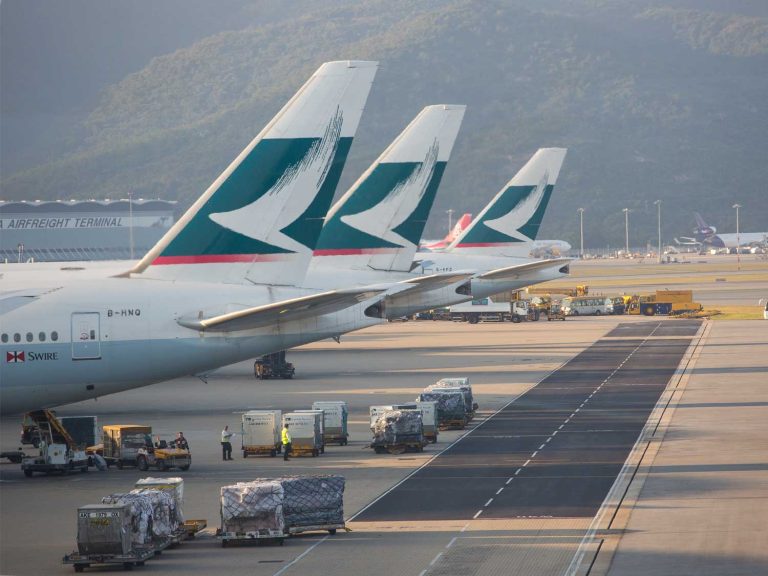
Date:
March Airfreight Surge Sets Stage for Further Growth as US-China Trade Tensions Ease
Airfreight markets posted a record performance in March, with particularly strong activity on Asia, US, Europe and UK trade lanes. The surge, driven by shippers front-loading cargo ahead of anticipated US tariffs, has provided a benchmark for what could follow in the months ahead as recent tariff reductions between the US and China hint at a renewed spike in activity.
According to IATA, global demand measured in cargo tonne-kilometres rose by 4.4% year-on-year, with international cargo traffic increasing by 5.5%. Capacity, meanwhile, increased by a similar margin, helping to stabilise load factors despite the sudden surge in volumes. Asia-Pacific carriers led growth with a 9.6% rise in demand and an 11% increase in available capacity. North American airlines recorded a 9.5% increase in volumes, while European carriers posted a more moderate rise.
Asia-North America remained the largest and fastest-growing trade lane by market share, as exporters sought to avoid the sharp rise in tariffs. The Europe-North America route also experienced strong activity and was the busiest overall in March, underpinned by steady intra-European demand which grew by 2%.
The operating environment provided further stimulus, with world industrial output and global trade volumes expanding by just under 3%. Falling energy costs provided additional support, with jet fuel prices down for the ninth consecutive month. Inflation rates also stabilised across key markets, providing additional certainty for international shippers. China’s deflationary environment also showed signs of softening, with the rate improving to just below zero.
The result was a sharp escalation in demand from sectors that rely on rapid supply chains and cannot risk ocean freight delays. Electronics, high fashion, automotive and perishable goods were among the leading commodities contributing to the increased volumes.
The extraordinary March performance may not remain an isolated event. The recent temporary US-China tariff reduction has the potential to trigger another wave of increased airfreight activity.
While the extent of future growth will depend on how negotiations between the world’s two largest economies unfold, the easing of tariffs has already bolstered market sentiment.
However, market analysts note that after the March peak, demand may return to more typical seasonal levels in the short term, particularly as capacity has increased by over 6% on international routes, offering more space for shippers. Yet, the fundamental reliance on airfreight for high-value and time-critical shipments between Asia, the US, Europe and the UK remains unchanged.
Should trade relations between the US and China continue to thaw, the market could be poised for another significant uplift in volumes. The key will be whether the current political stability translates into sustained confidence among exporters and freight forwarders across these critical trade lanes.
With airfreight demand surging and tariffs in flux, now is the time to optimise your supply chain strategy. EMAIL Elliot Carlile, Operations Director, to explore how we can help you secure space and streamline your international shipments.
